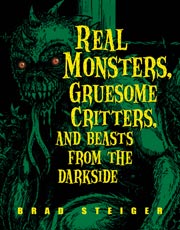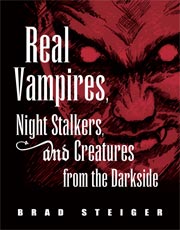Sometime around 140,000 years ago wolves and primitive humans formed a common bond and evolved together in one of the most successful partnerships ever fashioned. The wolf's strength, stamina, keen sense of hearing, and extraordinary sense of smell helped humans to hunt prey and to overcome predators. Because we humans teamed up with wolves, we became better hunters and thus supplanted our rival species of Homo erectus and Neanderthal.
Humans and wolves share a similar social structure. Both species employ a cooperative rearing strategy for their offspring with both parents participating in the feeding and rearing process. In most mammals, the care of the young is left almost exclusively to the mother. Wolves practice fidelity and mate for life, thus setting an early model for the family structure. Wolf packs also have dominant members, like any tribe or community, and humans probably began the domestication process by assuming the role of the dominant wolf and achieving acquiescence from the lupine leader.
The human species greatly depended upon wolves for its continued existence and modeled much of their behavior, especially in the area of survival skills, upon the wolf. As these prehistoric "wolf men" learned over time to hunt in packs and, with the assistance of their wolf allies, to subdue much larger predators, then certain elements of lupine savagery may well have been "inherited" along with the more noble aspects of a sense of community and mutual support.
In the beginning of our bonding with the lupine, all men and women wanted to be werewolves--Man-Wolves. However, after a few centuries of "civilization" the human community reached a time when it would be considered improper, antisocial, and criminal to behave like a wolf. Still, there remained the sorcerers and those on the fringes of society who believed that one could attain great power by maintaining those lupine links to a more savage past. They believed that they had the ability to shape shift to werewolves--wolf men and women.
From Real Monsters, Gruesome Critters, and Beasts from the Darkside by Brad Steiger, (c) 2011 Brad Steiger
Bloodcurdling, bone-chillingly fascinating, true monster stories.
 |
The Werewolf Book: The Encyclopedia of Shape-Shifting Beings, Second Edition
by Brad Steiger
When Darkness Reigns and the Full Moon Glows, Terror Emerges to Stalk the Unsuspecting…
Read More »
|
ISBN: 9781578593675
$49.95
|
 |
The Vampire Book: The Encyclopedia of the Undead, Third Edition
by J. Gordon Melton, PhD
The Ultimate Collection of Vampire Facts and Fiction
Death and immortality, sexual prowess and surrender, intimacy and...
Read More »
|
ISBN: 9781578592814
$74.95
|
 |
Real Monsters, Gruesome Critters, and Beasts from the Darkside
by Brad Steiger
Beware! Monsters are Everywhere
Monsters have been spotted everywhere, not just slithering under a child's bed or lurking in...
Read More »
|
ISBN: 9781578592203
$44.95
|
 |
Unexplained! Strange Sightings, Incredible Occurrences, and Puzzling Physical Phenomena, 2nd Edition
by Jerome Clark
The truth is out there, but looking for it is the real fun. Now, countless X-philes and insatiable fans of the supernatural, occult, and UFOs can...
Read More »
|
ISBN: 9781578590704
$29.95
|
 |
Real Zombies, the Living Dead, and Creatures of the Apocalypse
by Brad Steiger
The macabre secret history of the undead . . .
Featuring 30 chilling stories of real life zombie encounters, this comprehensive and...
Read More »
|
ISBN: 9781578592968
$44.95
|
 |
Real Vampires, Night Stalkers, and Creatures from the Darkside
by Brad Steiger
Not only do vampires exist, they walk among us! Paranormal researcher extraordinaire, Brad Steiger, reveals that real vampires are not immortal, do...
Read More »
|
ISBN: 9781578592555
$44.95
|










